When it comes to metals used in manufacturing and construction, the debate between cast iron vs steel (including variants like cast iron vs stainless steel and cast iron vs carbon steel) remains a crucial consideration for engineers and designers. Understanding the difference between cast iron and steel is essential for making informed decisions about material selection.
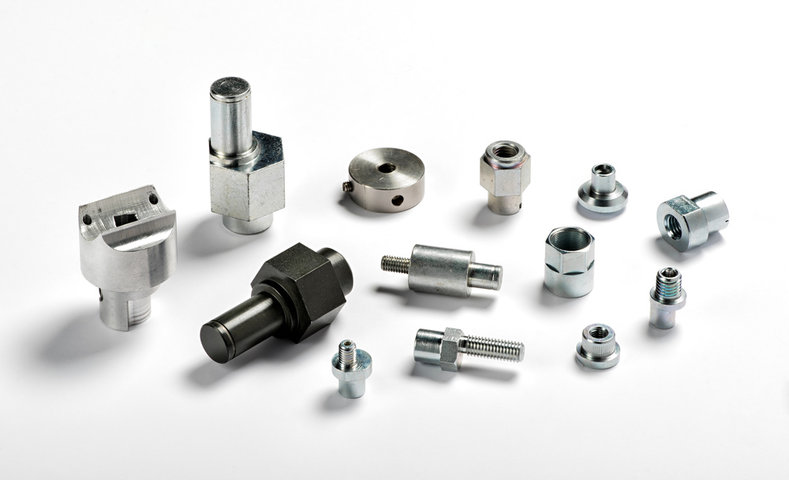
What is Cast Iron?
Cast iron material is a ferrous alloy containing more than 2% carbon content, typically ranging from 2% to 4%, along with varying amounts of silicon and manganese. The cast iron properties and characteristics make it distinct from steel, leading many to ask "is cast iron steel?" While cast iron contains iron, it is not technically steel due to its higher carbon content. The high carbon content in cast iron gives it unique properties, such as:
Good compressive strength
Excellent wear resistance
High vibration damping capacity
Resistance to deformation
Machinability
However, cast iron also has some disadvantages, including:
Despite these drawbacks, cast iron remains a popular choice for various applications due to its affordability and versatility.
Chemical Composition
The chemical composition of cast iron plays a crucial role in determining its properties. The primary elements in cast iron include:
| Element | Percentage |
| Carbon | 2% - 4% |
| Silicon | 1% - 3% |
| Manganese | 0.5% - 1% |
| Phosphorus | Up to 1% |
| Sulfur | Up to 0.1% |
The carbon and silicon content significantly influence the microstructure and properties of cast iron. Higher carbon levels increase the amount of graphite formed during solidification, while silicon promotes graphite formation and improves castability.
Physical Properties
Cast iron exhibits several distinct physical properties:
High density: Cast iron has a density of approximately 7.2 g/cm³, making it heavier than steel.
Low melting point: It melts at around 1150°C to 1250°C, which is lower than steel, making it easier to cast.
Thermal conductivity: Cast iron has a thermal conductivity of about 50 W/m·K, which is lower than that of steel.
Electrical conductivity: It has a lower electrical conductivity compared to steel, making it suitable for electrical applications where insulation is required.
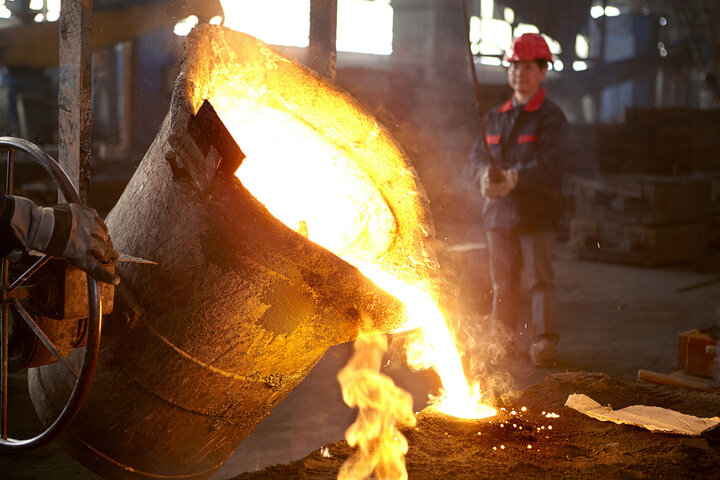
Types of Cast Iron
Cast iron can be categorized into several types based on its microstructure and properties. The main types of cast iron include:
Gray Cast Iron
Gray cast iron is the most common type, characterized by the presence of graphite flakes in its microstructure. It contains:
Carbon: 2.5% - 4%
Silicon: 1% - 3%
Manganese: 0.4% - 1%
Gray cast iron offers good compressive strength, excellent machinability, and high vibration damping capacity. It is widely used in applications such as:
Machine tool bases
Engine blocks
Brake discs
Housings and covers
White Cast Iron
White cast iron has a white fracture surface due to the absence of graphite. Its typical composition includes:
Carbon: 1.8% - 3.6%
Silicon: 0.5% - 1.9%
Manganese: 0.25% - 0.8%
White cast iron is known for its high hardness and excellent wear resistance. It finds applications in:
Grinding media
Slurry pumps
Ball mills
Rolling mill rolls
Malleable Cast Iron
Malleable cast iron is produced by heat-treating white cast iron to convert the brittle carbide structure into a more ductile ferritic matrix. It contains:
Carbon: 2% - 3%
Silicon: 0.9% - 1.9%
Manganese: 0.15% - 1.2%
Malleable cast iron combines high strength, ductility, and toughness. It is used in:
Pipe fittings
Hand tools
Agricultural equipment
Automotive parts
Ductile (Nodular) Cast Iron
Ductile cast iron, also known as nodular cast iron, is produced by adding magnesium or cerium to the molten iron, causing the graphite to form spherical nodules instead of flakes. Its composition includes:
Carbon: 3.2% - 4%
Silicon: 1.8% - 2.8%
Manganese: 0.1% - 1%
Ductile cast iron offers high strength, toughness, and ductility. It is widely used in:
Crankshafts
Gears
Valves
Suspension components
Vermicular Cast Iron
Vermicular cast iron, also known as compacted graphite iron (CGI), has a unique microstructure with graphite particles in the form of short, thick flakes. It offers intermediate properties between gray and ductile cast iron, such as:
Higher strength and stiffness than gray cast iron
Better thermal conductivity than ductile cast iron
Improved castability compared to ductile cast iron
Vermicular cast iron is increasingly used in automotive applications, such as:
Diesel engine blocks
Exhaust manifolds
Brake discs
Alloyed Cast Iron
Alloyed cast iron is produced by adding alloying elements like nickel, chromium, molybdenum, or copper to enhance specific properties. Depending on the alloying elements used, alloyed cast iron can offer:
Improved strength and hardness
Better wear resistance
Enhanced corrosion resistance
Higher temperature stability
Alloyed cast iron finds applications in various industries, such as:
Mining equipment
Power generation
Petrochemical processing
Automotive components
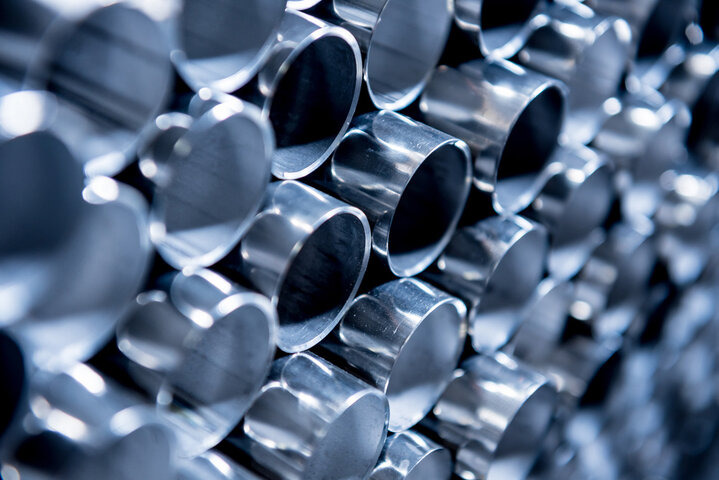
What is Steel?
Steel is an iron-based alloy containing less than 2% carbon and small amounts of other elements, such as manganese, silicon, phosphorus, sulfur, and oxygen. It is known for its high tensile strength, ductility, and versatility, making it a widely used material in various industries. Steel's properties can be tailored by adjusting its composition and through heat treatment processes.
Chemical Composition
The chemical composition of steel plays a crucial role in determining its properties. The primary elements in steel include:
| Element | Percentage |
| Iron | 90% - 99% |
| Carbon | 0.1% - 2% |
| Manganese | 0.1% - 1% |
| Silicon | 0.1% - 0.5% |
| Other elements | < 1% |
The carbon content is the most significant factor influencing steel's properties. Higher carbon levels increase strength and hardness but reduce ductility and weldability.
Physical Properties
Steel exhibits several distinct physical properties:
High tensile strength: Steel can withstand high loads without breaking or deforming permanently.
Ductility: It can be drawn into wires or rolled into sheets without fracturing.
High melting point: Steel melts at temperatures between 1370°C and 1540°C, depending on its composition.
Thermal conductivity: It has a relatively high thermal conductivity, allowing heat to transfer efficiently.
Electrical conductivity: Steel is a good conductor of electricity, although not as efficient as copper or aluminum.
Advantages of Steel
Steel offers numerous advantages, making it a popular choice for various applications:
High strength-to-weight ratio: Steel provides excellent strength while maintaining a relatively low weight compared to other materials.
Durability: It can withstand harsh environments, impacts, and wear, making it suitable for long-lasting structures and components.
Versatility: Steel can be shaped, formed, and joined using various methods, allowing for complex designs and structures.
Recyclability: It is 100% recyclable, making it an environmentally friendly material.
Cost-effectiveness: Steel is relatively inexpensive compared to other materials with similar properties.
Disadvantages of Steel
Despite its numerous advantages, steel also has some disadvantages:
Corrosion: Steel is susceptible to rust and corrosion when exposed to moisture and oxygen, requiring protective coatings or alloying elements to enhance corrosion resistance.
Fatigue: Repeated cyclic loading can cause steel to fail at stresses below its yield strength, a phenomenon known as fatigue.
High density: Steel is denser than materials like aluminum, which can be a drawback in applications where weight reduction is crucial.
Energy-intensive production: The production of steel requires significant energy input, contributing to greenhouse gas emissions.
Types of Steel
Steel can be categorized into several types based on its composition and properties:
Carbon Steel
Carbon steel is the most common type of steel, containing primarily iron and carbon. It is further classified based on its carbon content:
Low carbon steel (< 0.25% carbon): It is soft, ductile, and easily formable, making it suitable for applications like car body panels and wire products.
Medium carbon steel (0.25% - 0.6% carbon): It offers a good balance of strength and ductility, making it suitable for applications like gears, shafts, and railway tracks.
High carbon steel (> 0.6% carbon): It is hard, strong, and wear-resistant but less ductile, making it suitable for applications like cutting tools, springs, and bearings.
Alloy Steel
Alloy steel is produced by adding alloying elements like manganese, nickel, chromium, or molybdenum to enhance specific properties. Common alloying elements and their effects include:
Manganese: Increases strength, hardness, and wear resistance.
Nickel: Improves toughness, ductility, and corrosion resistance.
Chromium: Enhances corrosion resistance, hardness, and wear resistance.
Molybdenum: Increases strength, toughness, and creep resistance at elevated temperatures.
Alloy steels find applications in various industries, such as:
Stainless Steel
Stainless steel is an alloy steel containing a minimum of 10.5% chromium, which forms a protective oxide layer on the surface, providing excellent corrosion resistance. Stainless steels also often contain other alloying elements like nickel, molybdenum, and titanium to enhance specific properties.
Stainless steels are widely used in applications that require corrosion resistance, such as:
Tool Steel
Tool steels are high-carbon, alloy steels designed for making tools, dies, and molds. They are known for their high hardness, wear resistance, and ability to maintain their properties at elevated temperatures. Tool steels often contain alloying elements like tungsten, molybdenum, and vanadium to enhance their performance.
Tool steels are used in various applications, such as:
Cutting tools (drills, taps, dies)
Forming tools (punches, dies)
Molds for plastic injection molding
Rolling mill rolls
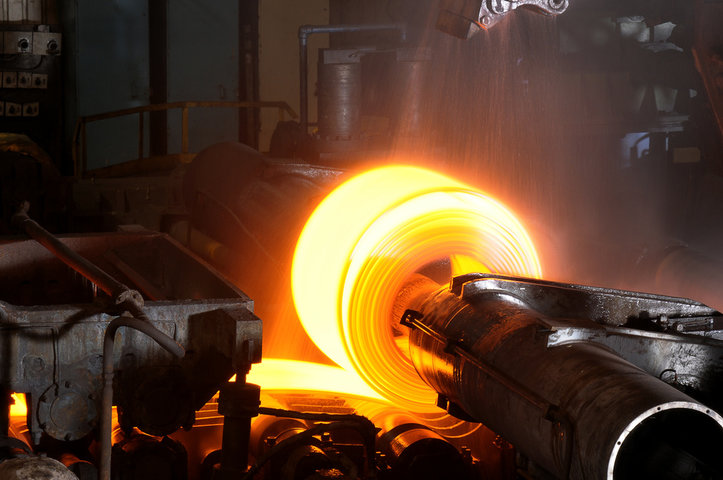
Key Differences between Cast Iron and Steel
While cast iron and steel are both iron-based alloys, they have distinct characteristics that set them apart. Understanding these differences is crucial for selecting the most suitable material for a given application. Let's explore the key differences between cast iron and steel:
1. Carbon Content
The carbon content is the primary distinguishing factor between cast iron and steel.
Cast iron contains 2-4% carbon, which gives it unique properties like high compressive strength and excellent castability.
Steel has a carbon content of less than 2%, resulting in higher tensile strength and ductility compared to cast iron.
2. Melting Point
The melting point of cast iron and steel differs significantly, affecting their production processes and applications.
Cast iron has a lower melting point, around 2200°F (1204°C), making it easier to melt and pour into molds.
Steel has a higher melting point, ranging from 2500°F to 2800°F (1371°C to 1538°C), requiring more energy for melting and casting.
3. Strength
Cast iron and steel exhibit different types of strength, making them suitable for various applications.
Cast iron has higher compressive strength, allowing it to withstand heavy loads and resist deformation when subjected to compression forces.
Steel has higher tensile strength, enabling it to withstand pulling forces without breaking or permanently deforming.
4. Ductility and Brittleness
Ductility and brittleness are important factors that influence a material's behavior under stress.
Cast iron is brittle and has low ductility, meaning it can fracture or break suddenly when subjected to impact or bending forces.
Steel is more ductile and less brittle than cast iron, allowing it to deform plastically before fracturing, providing a margin of safety in applications.
5. Castability
The ease of casting plays a significant role in the production process and the complexity of shapes that can be achieved.
Cast iron is easier to cast due to its lower shrinkage during solidification and better flowability, enabling the production of intricate and complex shapes.
Steel is more challenging to cast compared to cast iron, as it experiences higher shrinkage and has lower flowability, requiring more advanced casting techniques.
6. Machinability
Machinability refers to the ease with which a material can be cut, drilled, or shaped using machine tools.
Cast iron is generally easier to machine than steel, as the graphite flakes in its microstructure act as a natural lubricant, reducing tool wear and improving surface finish.
Steel is more challenging to machine compared to cast iron, causing higher tool wear and requiring more advanced cutting tools and techniques.
7. Corrosion Resistance
Corrosion resistance is crucial for applications exposed to harsh environments or corrosive media.
Cast iron has moderate to low corrosion resistance, making it susceptible to rust and corrosion when exposed to moisture and other corrosive elements.
Steel has higher corrosion resistance compared to cast iron, especially when alloyed with elements like chromium, nickel, or copper, making it suitable for applications in corrosive environments.
8. Wear Resistance
Wear resistance determines a material's ability to withstand surface damage caused by friction or abrasion.
Cast iron has better resistance to mechanical wear, especially in friction-wearing situations, due to the presence of graphite flakes that act as a solid lubricant.
Steel is less wear-resistant compared to cast iron, but it can be improved through heat treatment or the addition of alloying elements like chromium or molybdenum.
9. Impact Resistance
Impact resistance refers to a material's ability to absorb and dissipate energy from sudden impacts without fracturing.
Cast iron has low impact resistance due to its brittleness, making it prone to fracture when subjected to sudden impacts or shock loads.
Steel has high impact resistance and is excellent at withstanding sudden impacts, making it suitable for applications where impact loading is expected.
10. Cost
The cost of materials, production, and processing plays a significant role in the selection of cast iron or steel for a given application.
Cast iron is generally cheaper than steel due to lower material costs, simpler production processes, and lower energy requirements for melting and casting.
Steel is more expensive compared to cast iron, but it offers a wider range of cheaper alternatives, such as prefabricated forms and recycled materials, which can reduce overall costs.

Applications of Cast Iron and Steel
Both cast iron and steel serve diverse purposes across industries, selected for their distinct properties to meet specific functional needs.
Cast Iron Applications
Cast iron’s strength, machinability, and cost-effectiveness make it a popular choice in heavy-duty applications where durability is key.
Automotive Industry: Cast iron is ideal for parts requiring heat resistance and vibration damping. Common uses include:
Construction: Valued for its robustness, cast iron is widely used in building elements like:
Pipes and fittings for plumbing and drainage systems, offering corrosion resistance
Decorative elements, such as fencing and street furniture, due to its castability and durability
Manufacturing: In industrial settings, cast iron’s vibration-damping properties are crucial in:
Machine tool bodies and bases that require stability for precision
Housings for large machinery, where structural integrity is essential
Steel Applications
Steel’s tensile strength, versatility, and corrosion resistance make it indispensable across various industries, especially where impact resistance is critical.
Construction: Steel plays a foundational role in building infrastructure and provides essential support in:
Structural components like beams, columns, and frameworks for buildings and bridges
Reinforcements in concrete structures to improve tensile strength
Automotive Industry: In vehicle production, steel’s high strength-to-weight ratio makes it an excellent choice for:
Car bodies and chassis, offering durability and impact resistance for safety
Wheels and axles, providing high performance and fatigue resistance
Manufacturing: Steel is essential in creating durable and high-performance tools, including:
Home Appliances and Cookware: Stainless steel’s corrosion resistance and aesthetics make it popular in household applications:
Kitchen appliances, such as refrigerators and ovens, for easy maintenance
Cookware, including pots and pans, valued for their durability and heat retention
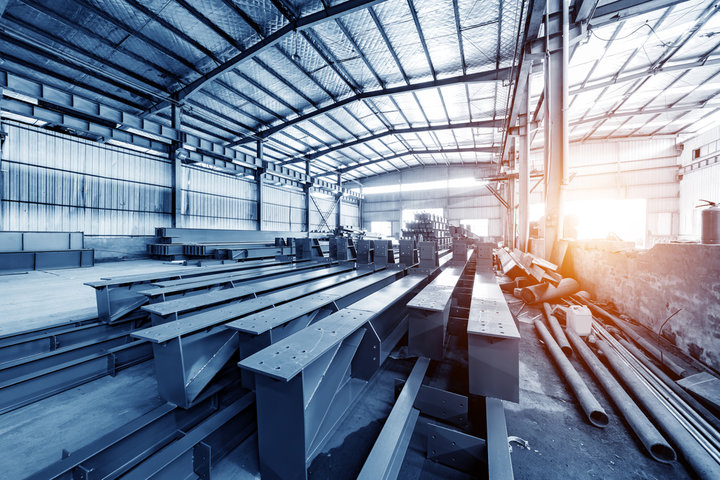
Factors to Consider When Choosing Between Cast Iron and Steel
Selecting the right material between cast iron and steel requires careful evaluation of multiple factors. Each project presents unique challenges and requirements. Understanding these key considerations helps make informed decisions.
Strength Requirements
The type of force your project must withstand determines your material choice. Cast iron excels under compression, making it ideal for building foundations and machine bases. Steel offers superior tensile strength, perfect for structures needing resistance against pulling or stretching forces.
Corrosion Resistance
Environmental exposure plays a crucial role in material selection. Cast iron develops a protective patina over time, offering moderate corrosion resistance. Steel, especially stainless variants, provides better protection against rust and chemical corrosion. Consider the material's exposure to moisture, chemicals, or saltwater.
Impact Resistance
Your project's vulnerability to sudden forces affects material choice. Steel demonstrates excellent resistance to impacts and sudden loads. Cast iron shows brittleness under impact, though it handles steady loads well.
Manufacturing Complexity
The following aspects influence production feasibility:
Cast iron allows more intricate designs through its superior casting properties and flow characteristics
Steel offers greater flexibility in post-production modifications and joining methods
Complex shapes require less machining when using cast iron due to better castability
Steel provides more options for welding and mechanical fastening in assembly processes
Cost Considerations
| Factor | Cast Iron | Steel |
| Raw Material | Lower cost | Higher cost |
| Processing | Simpler casting process | More complex manufacturing |
| Labor | Less intensive | More labor required |
| Maintenance | Regular protection needed | Varies by type |
Environmental Factors
Temperature and environmental conditions influence material performance:
Cast iron maintains stability across wide temperature ranges
Steel offers better performance in extreme cold conditions
Both materials need protection from harsh weather exposure
Indoor applications face fewer environmental challenges than outdoor installations
Summary
In summary, cast iron and steel differ in composition, strength, and cost. Cast iron offers high compressive strength and lower production costs, while steel provides greater tensile strength and impact resistance. Selecting the right material means matching its properties to your application needs. By understanding these key differences, you can make informed choices that improve durability and efficiency in your projects.
Reference Sources
Iron
Steel
Best High Pressure Die Casting Factory in China
Frequently Asked Questions (FAQs)
Q: What is cast iron, and how is it made?
Cast iron is an iron-carbon alloy with a carbon content above 2%, created through smelting and casting.
Q: What is steel, and how does it differ from cast iron?
Steel is an iron-carbon alloy with less than 2% carbon, offering higher tensile strength than cast iron.
Q: Why does cast iron have better compressive strength than steel?
Cast iron's high carbon content enhances its compressive strength, making it suitable for bearing heavy loads.
Q: How do cast iron and steel compare in terms of corrosion resistance?
Steel, especially stainless steel, generally offers better corrosion resistance, while cast iron can rust without protective coatings.
Q: What technical properties should I consider when choosing between cast iron and steel?
Consider factors like tensile strength, compressive strength, machinability, corrosion resistance, and impact tolerance for optimal results.
Q: How is the machinability of cast iron compared to steel?
Cast iron is easier to machine due to its graphite structure, which reduces wear on cutting tools compared to steel.
Q: Why is cast iron more suitable for complex casting designs?
Cast iron has better flowability and lower shrinkage, allowing intricate shapes with minimal deformation during cooling.
Q: How can I troubleshoot common issues with cast iron in high-impact applications?
If cast iron fractures under impact, consider steel for better impact resistance or apply additional support structures.
Q: What safety precautions should I take when handling cast iron and steel?
Wear protective gear, maintain proper ventilation during cutting or welding, and use tools rated for high-tensile materials.
Q: Where are cast iron and steel best used in industrial applications?
Cast iron works well for heavy, stationary parts like engine blocks, while steel is ideal for structural, load-bearing, and high-impact applications.




















